En Route... Eğin / Agn / Kemaliye
Mehmet Yayla, October 2018
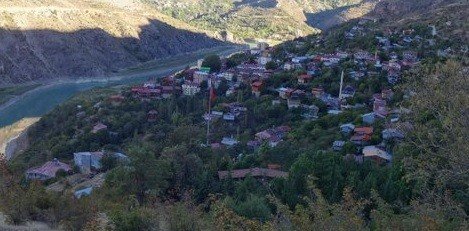
Eğin... Town in eastern-central Turkey. "Kemaliye" as official name, "Agn" with the historical name in Armenian. Land of my grandparents (from mom's side). I decided to visit this special town in central-eastern Anatolia, in October 2018.
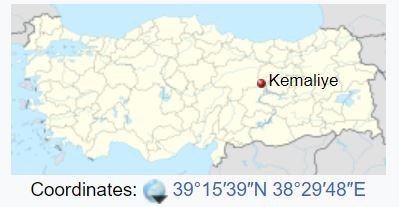
In Erzincan, if you ask shopkeepers for public transport to Egin, be sure to write "Kemaliye" on a paper and show them, otherwise they easily mix it with nearby "Kemah" and send you to there!
The van departs at 4pm (that may change in seasons). The rate is around 5 euros and the travel lasts 3 hours, kind of slow. You may want to have with you pills against road sickness (seasickness) if you are sensible. If you take a break in Kemah on the way, you can visit Melikgazi tombs quickly and take a few pictures of Kemah from a distance.
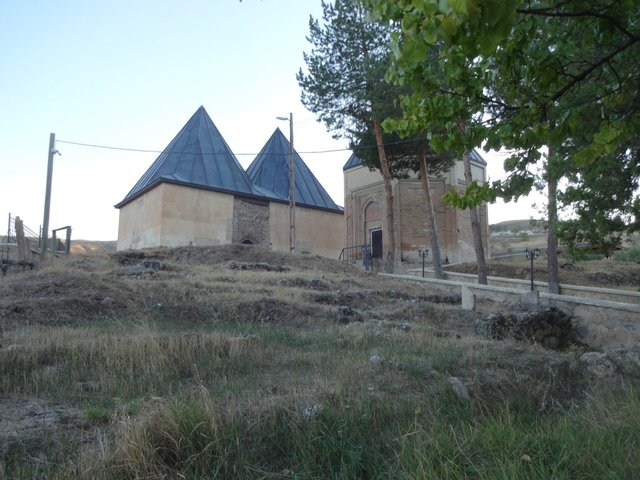
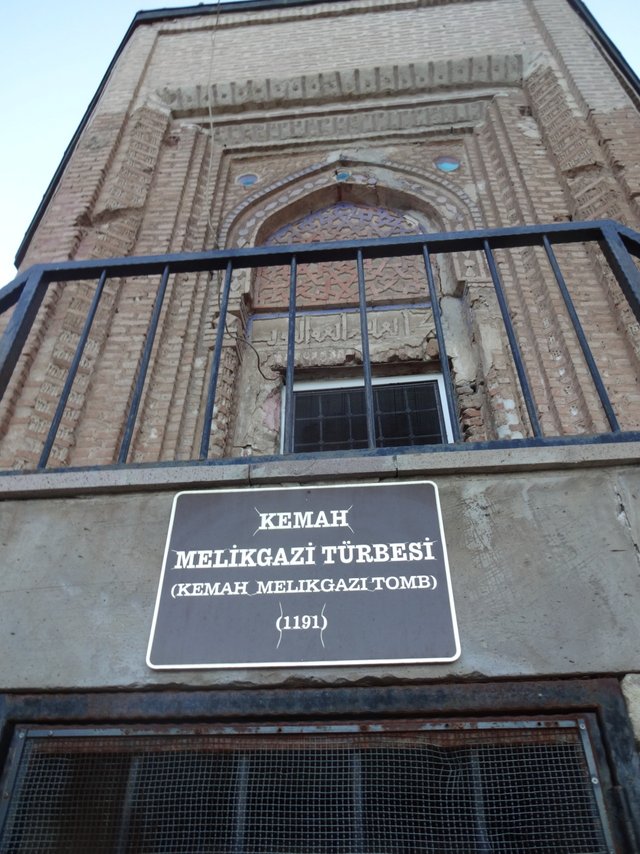
The tombs/mausoleums are from the era of Mengücük Principality which dominated the region between 11th-13th centuries AD. There is another mausoleum at the other side of the river :
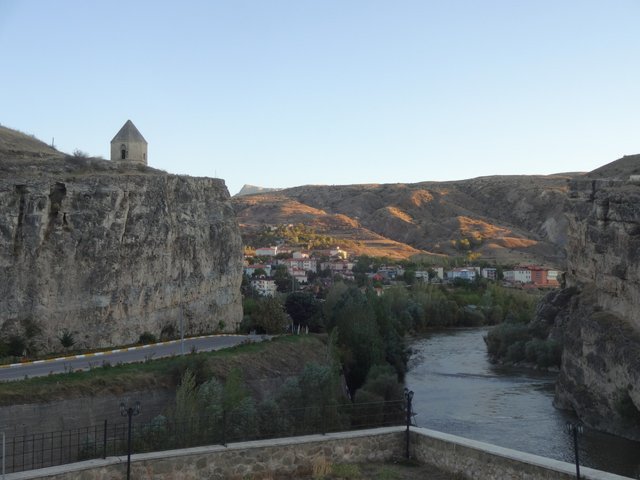
After the short break in Kemah, all passengers continue to Eğin through the winding road. The driver seems experienced and vigilant on the challenging road. 2 more hours, and we arrive at Egin/Kemaliye after dark.
Even though it's already dark I take my bag and start exploring Eğin. The town is built on the mountainside, I walk uphill, downhill, in a town full of slopes! Weather is cool, almost cold in this October evening. And it's very green! Apparently, buildings are permitted up to 3 or 4 floors. As I walk down the main road, I come out to the first attraction of Eğin: Kültür Café (Culture Café):
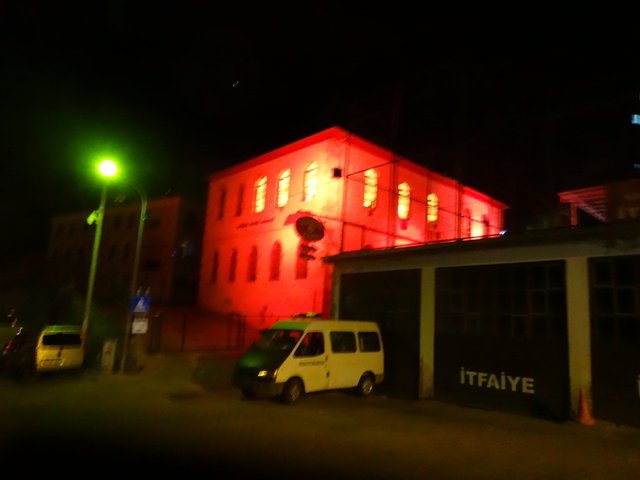
I make the right decision and go straight to the café, there are not many other cultural or social places open in the evening in this Anatolian town. Formerly used as a secondary school in Eğin, the historical building was later converted into a museum-café. The employees are very friendly and knowledgeable, and they are happy to answer my endless questions. When I told them that my grandmother was from Eğin, they told me that she probably attended this building as secondary school. I am there, having tea and dessert in my grandmother's school! The interior is tastefully and pleasantly furnished. A nice venue, serving both as a museum and as a café.
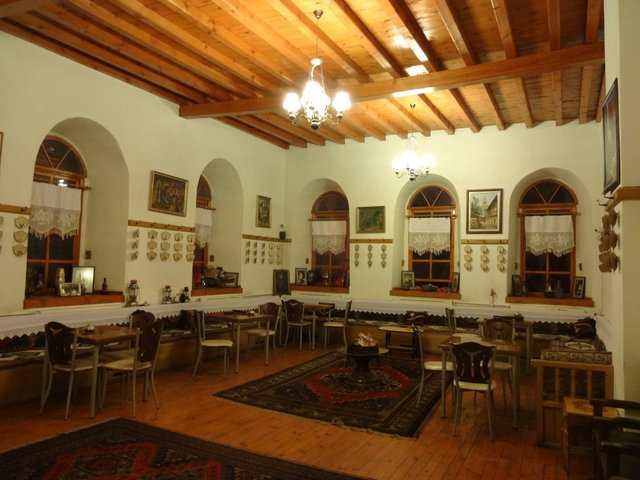
Eğin is also famous for his poetry-manuscripts.
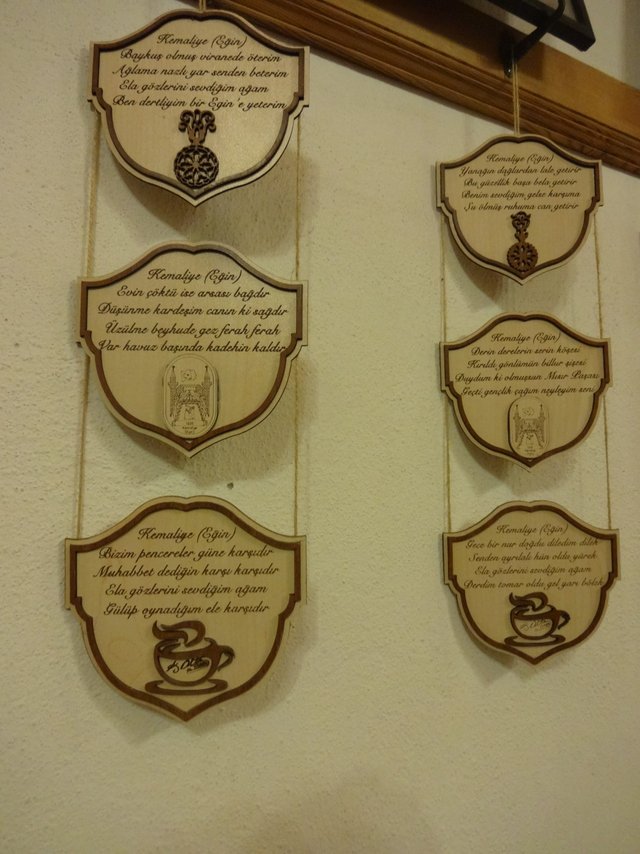
They also exhibit some photographs taken at 1920s and 1930s, which are the first decades of the modern republic after the fall of the Ottoman Empire.
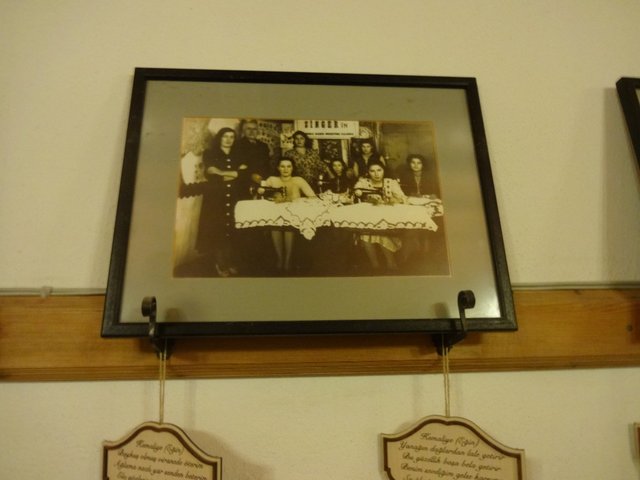
I stay in the cafe till late. Here should be one of the most popular places for young people of Egin, the tables are full untill 11pm. Towards midnight however, I was alone and I left, thinking that the staff might be staying late for me alone.
The next morning, I decide to go to Kanyon Cafe near where I stay, for breakfast this time:
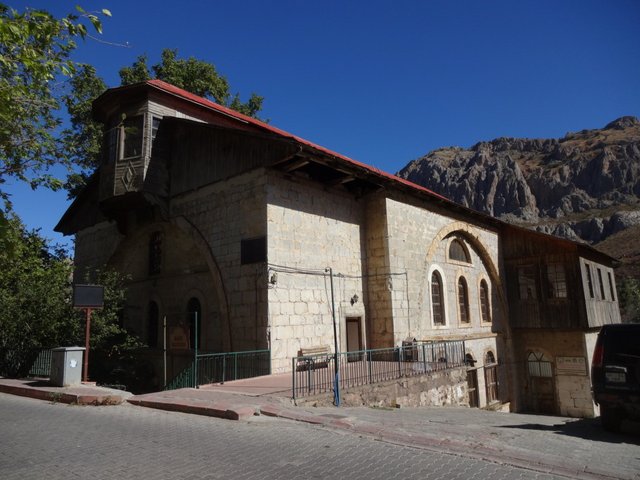
Kanyon Café is also among Eğin's attractions, and has a lovely garden with a view of the Euphrates down the stairs:
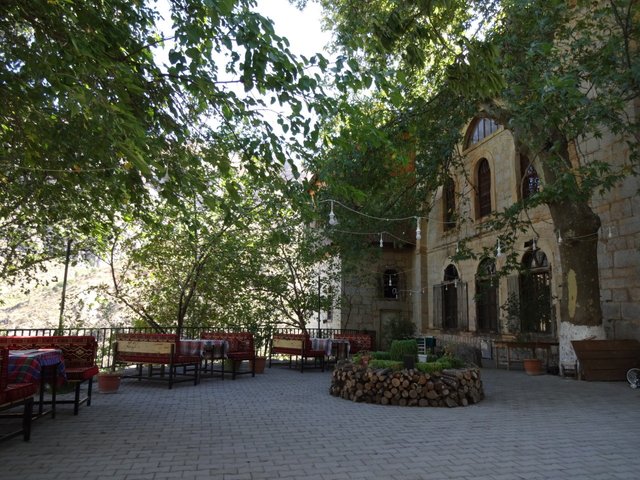
It's sunny but cold in the morning. After sitting 3 minutes outside, I run to my room to get something to wear and come back. The fresh air and the sloppy roads make me awake as if I had drunk a good coffee.
Mr. Niyazi, the owner and manager of the café tells me about the history of the building with very accurate details: Building of the church Surp Kevork, by Hovhannes Donigyan, an Armenian building master from the village of Sagam in Palu (Elazıg) started in 1876 and it is completed in 2 years by spending sixty-five thousands gold coins. In 1896, a law enacted by the Ottoman Grand Vizier, in Eğin as in several other parts of Anatolia, urged the non-muslims living in the villages to convert to be muslim (as far as I understand only the rich and influential families living at the center were exempt from this obligation). Under the same law, the Grand Vizier confiscates some of the church properties, and the Surp Kevork church is given at this stage for the use of a national organisation. In 1915, the building becomes a carpet workshop, run by an Armenian carpet master and started to produce the famous Eğin carpets. Later on, it was used as a warehouse, a cooperative building and a prison for a while. Now, on the lower floor of the old church is the Kanyon Cafe, on the ground floor there is a Women's Folk Dance Club, while the top two floors serve as an ethnography museum. The museum is a modest place with 3-4 sections, but has an interesting and nostalgic collection about the town's life at the late 19th and early 20th centuries. For example, one can see artifacts such as an Ottoman postman bag from the end of the 19th century :
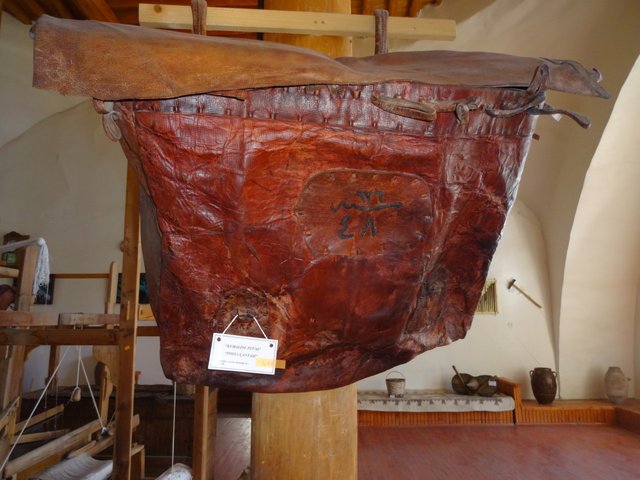
The top floor (attic) of the church makes part of the museum although there is not much to see, except a few portraits and a beautiful sunlight gushing through the windows...
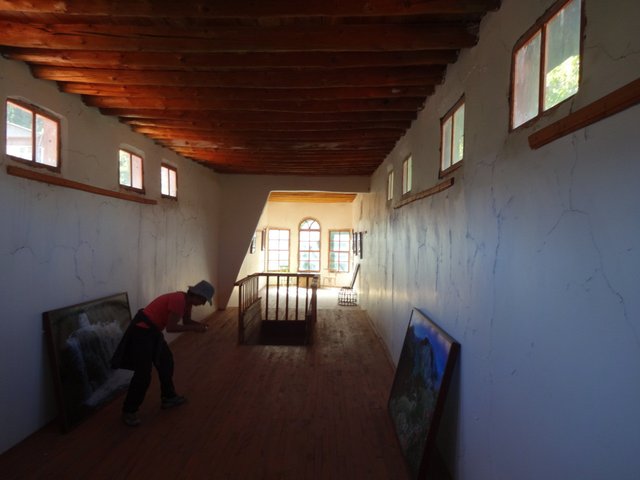
... and a pleasant view of Eğin outside:
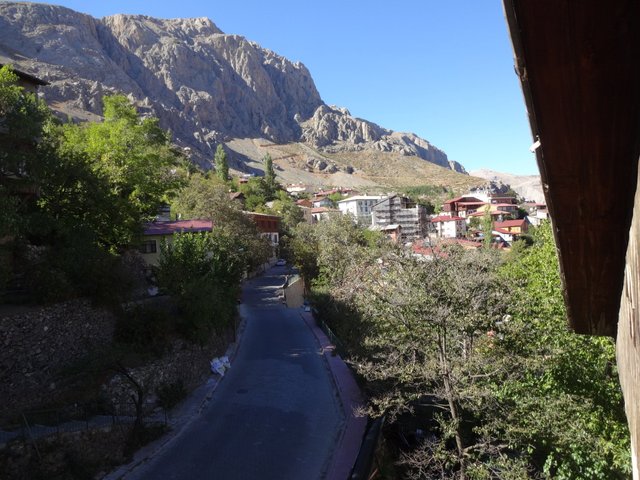
Unfortunately, the multicultural life that existed in the region until the beginning of the 20th century is not well represented in the museum. Apparently, the ethnic history of Eğin still remains a taboo. Today, it is difficult to see traces of the Armenian and Greek populations in the region (more than 50% of the population in Eğin according to 1840 census). I have been told by locals that there are some cultural heritage in the villages like Venk (Yaka), Şırzi (Esenköy) but I could not go to these place as they were miles away and renting a taxi would cost a lot.
In the afternoon, I visit the streets with famous Eğin houses, climb the slopes out of the town until I got tired and take photographs. There is a high flagpole above the Taşdibi neighborhood and a tea garden with a nice view:
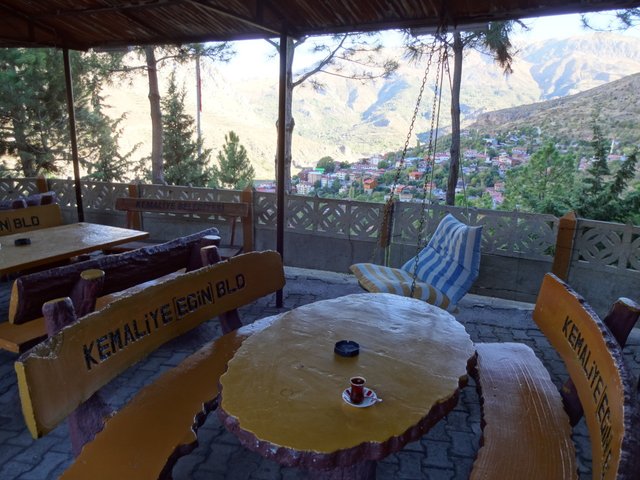
From here, it is possible to take a picture of the town and the Euphrates inside the same frame, after climbing a bit more uphill:
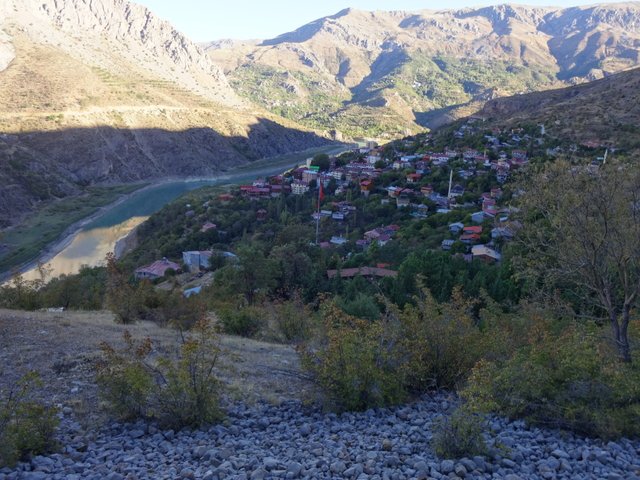
On my way back, I felt my legs aching due to walking up and downhill for the last couple of hours. Visiting this town by car would be a good idea, both for its slopes and in order to visit the interesting places around, on its remote villages or on the way to Elazığ (e.g. Arapgir, 800 years old Cemevi in Onar village). In fact, there is a commercial tour company at the center, they organize river trips and tours to nearby villages, but they are idle unless they can gather a crowded group.
The next day I was wandering around and trying to see more of typical Eğin houses with wooden fringed decorations:
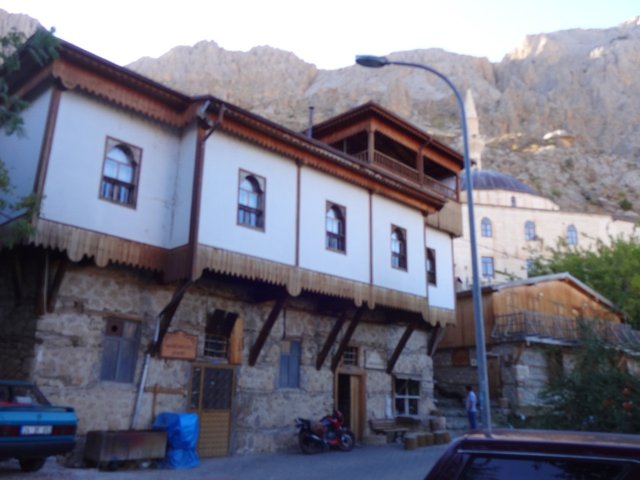
The nature and the town remind me of the Black Sea plateaus and the practical problem-solving minds of the people there:
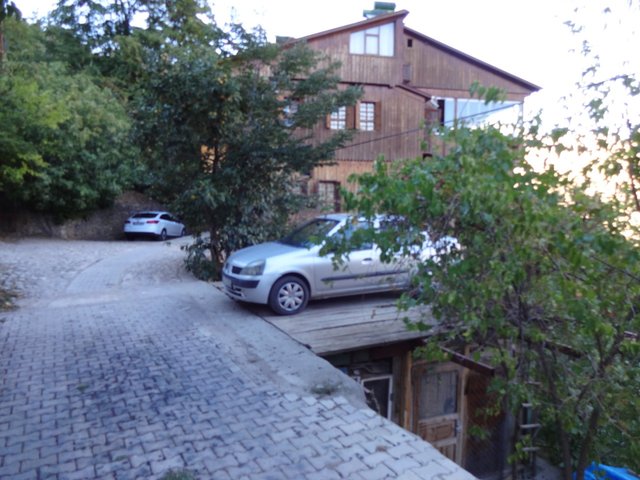
There is a "Manuscript Road" (Mani Yolu) at the top of the slope. Along the scenic road, traditional manuscript poems are displayed on the plates:
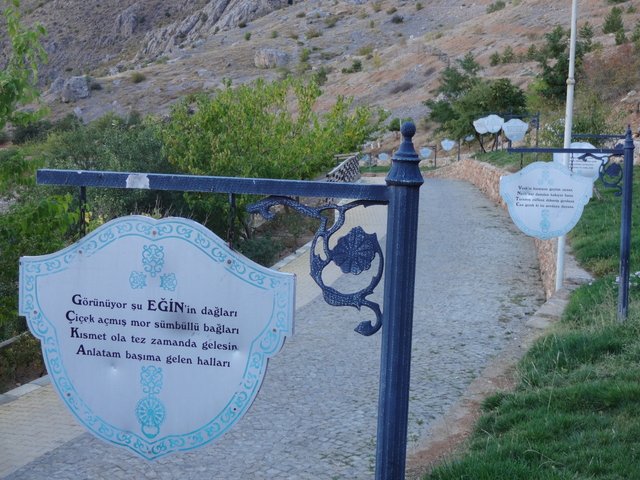
In Taşdibi neighborhood, it is possible to find tastefully furnished, traditional restaurants/inns for lunch or for dinner.
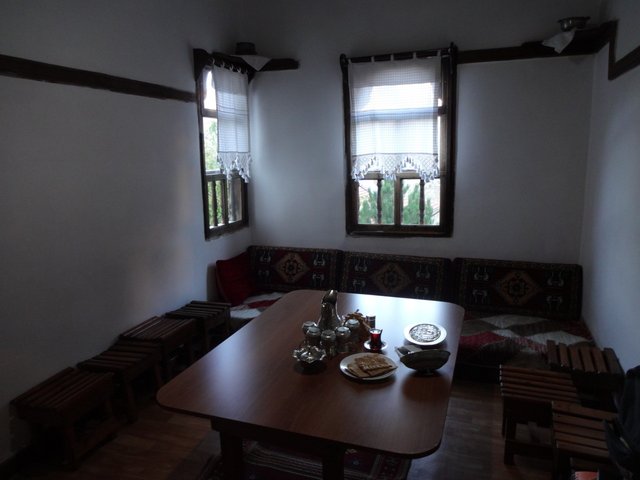
Later on, while drinking a tea in Kanyon Cafe I was thinking how I should get up at 5 am next morning to catch the only daily public transport leaving Eğin for Elazığ. Luckily for me, Mr. Niyazi was about to go to that direction for some work, he offers me a lift and I graciously accept. We leave Eğin in the afternoon.
Congratulations @mehmety! You received a personal award!
You can view your badges on your Steem Board and compare to others on the Steem Ranking
Vote for @Steemitboard as a witness to get one more award and increased upvotes!